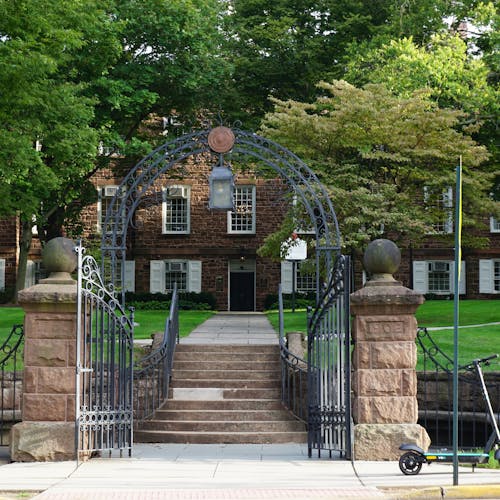U. event discusses dignity in understanding interpersonal, international conflict

On Wednesday, Donna Hicks, an associate in the Weatherhead Center for International Affairs at Harvard University, spoke at the "Bringing Dignity to Divided Times" event that took place at Robert Wood Johnson University Hospital's Clinical Academic Building, according to an announcement from the Tyler Clementi Center for Diversity Education and Bias Prevention on the social media platform X.
The talk was the second event in the Center's "Navigating Tensions, Affirming Community" series, a part of the University's "Meeting the Moment with Humanity" initiative.
Hicks said she began her career as a psychologist mainly working with victims of international political conflict. She had difficulty determining the reasoning for her clients' emotional outbursts, and when she would suggest trauma as a potential cause, her clients would reject her.
After these shortcomings, Hicks realized that her clients' source of pain was their dignity as human beings being insulted, she said.
"Many of them would say, 'Well, this isn't just about me. This is also about my ancestors. It's about my people who have suffered for centuries, decades' — for some of them, centuries, actually. And so, there was just some magic in that word (dignity)," she said.
An informal poll she conducted with a client group in Colombia revealed that her clients related significantly more to this new vocabulary, and Hicks said she felt at ease upon achieving this breakthrough.
Hicks said she realized that the issue of dignity expanded past the realm of political conflict and that a human-focused approach would be more conducive to productive results. Additionally, she said that conflicts can make those involved abandon empathy, especially as one party perceives a threat in the other.
"In my field, we would often talk about trying to find common ground in order to resolve conflicts. I don't think so anymore. Because I think what we have to find is higher ground. We've got to elevate this concept of dignity, our shared humanity, our shared desire to be treated as if we're worthy and we're something of value," Hicks said.
In the past, many of her clients attempted to demand respect from their opposition, but being treated as a human being with dignity is the foundation upon which respect can be earned, according to Hicks.
Hicks also said she presented data supporting the importance of dignity to corporate clients. One such study showed the brain's amygdala is activated when one's dignity is hurt.
"Their jaws dropped when I said that the brain doesn't know the difference between the experience of a physical injury and a wound to its dignity," she said.
Hicks said she found 10 key elements of being treated with dignity, including acceptance, recognition, inclusion and safety. Out of all of the 10 factors, Hicks said she found safety to be the one violated most often in working environments.
She said her work largely focuses on giving workers a way to safely give feedback and speak up after violations of dignity. Oftentimes, those in leadership roles may inadvertently commit such violations, so awareness of this concept is valuable for workplace safety, she said.
Furthermore, she said that dignity can be categorized into three different forms of connection. The first is connection to the self, which assigns oneself the agency to claim dignity. The second is connection to others, which asserts that everyone has dignity. The last is connection to something greater than oneself, such as religion or morality, she said.
"So, this connection, connection, connection — I believe, that if we can get all three of these connections in alignment in our daily lives, this is what fulfillment looks like," Hicks said. "It's what it looks like to really be living a life that has purpose and meaning: connection, connection, connection."



